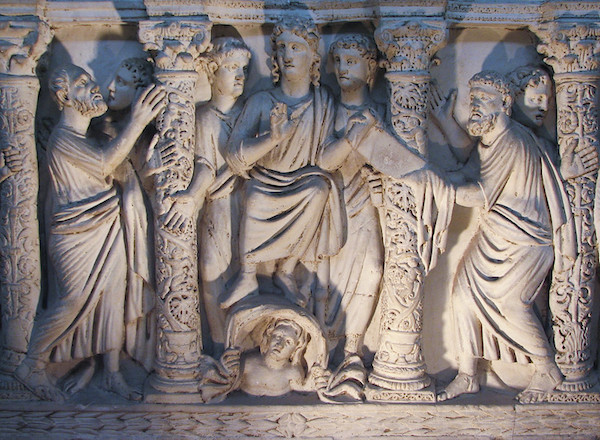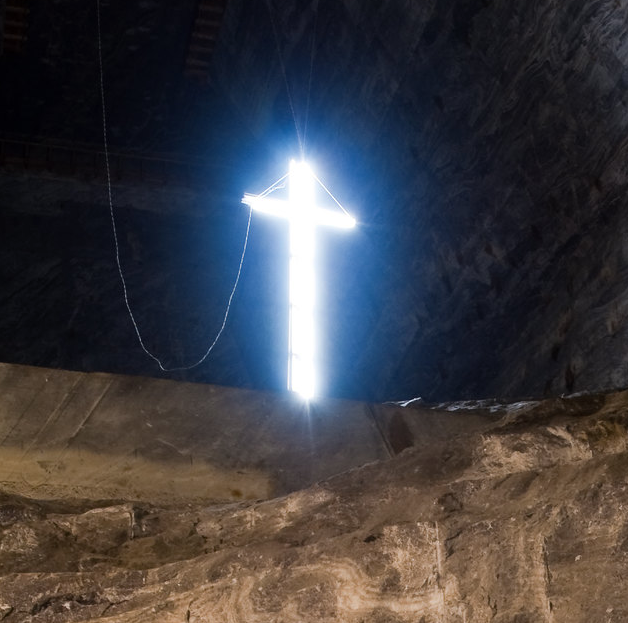A homily preached on the 5 February 2023.
Gospel: Matthew 5:13-16
Today’s gospel is a tiny but arresting extract from the Sermon on the Mount that employs two familiar but still striking images, salt and light, that have become ubiquitous across the centuries and in almost every culture. But like all extracts, these twin images are easily misunderstood out of context. Salt’s status in our health and safety obsessed world has, of course, become highly ambivalent: but in Jesus’s world, it was an unalloyed good, not just as a taste enhancer but a much-needed preservative. The natural symbolism of light needs no elucidation: it is the sine qua non of life itself.
Wrenched from their setting in the Sermon, however, they could easily seem to be injunctions that run the risk of arrogance or, even worse, and almost the only failing Jesus repeatedly censures in the gospels, hypocrisy. To be told that we are the salt of the earth and the light of the world is not an incitement to be insufferable ‘goody-two shoes’.
To appreciate what Matthew is doing in the Sermon on the Mount (it was St Augustine who first gave it that name), we need to remember how, much more than the other gospels, his reflects the tensions associated with Christianity’s emergence from its Jewish roots. By the time of Matthew’s gospel, Christians are already anathematised by Jews as heretics and blasphemers. And yet at the same time, Matthew’s is the most Jewish of the gospels, even if he is the most trenchant critic of the ‘mother faith’, as it were.
Above all else, he’s anxious to show the continuity of Christianity and Judaism: the Church is the New Israel. That’s why his text is constructed like the Torah in five blocks of teaching, paralleling the five books of the Law of Moses. And here in the Sermon on the Mount, just as Moses went up the mountain to receive the Law from God, so Jesus goes up a mountain to teach his followers the New Law. (Notice how Luke situates the Sermon on a plain).
But this is not just a New Law: it’s a decidedly strange Law, and we must be careful not to domesticate that strangeness. For one thing, contrary to everything a pious Jew of the time had been taught, Matthew tells them that holiness (he uses the Jewish word ‘righteousness’) consists primarily not in outward actions but a pure heart, a heart rightly disposed. The heart is the source of our actions: get the heart right, and the right actions will follow, he tells us. The Old law, or at least the contemporary understanding of it in the time of Jesus, had laid emphasis on external observance; but he now returns to the original point of the law, by emphasising ‘righteousness’ in the heart rather than on the sleeve.
The New Law, in other words, can’t be interpreted legalistically. For one thing, it’s just not that kind of Law; for another, it’s delivered in such a way as to make it impossible to codify and thus control. That’s why so much of what Jesus has to say teeters on the brink of paradox and even contradiction. He makes it clear that he comes not to congratulate religious high-flyers or spiritual experts, but to call - and heal – sinners; ‘crooks and crocks’, as Ronald Knox said.
But quite apart from overturning religious expectations, the New Law reverses worldly expectations, especially those focused on security and success, whether financial, domestic, or defensive. All such conventional ideals are overturned: don’t save, he says; don’t resist violence; remember the poor are happier and more blessed than the rich.
So, in this New Law, Jesus is turning the world inside out, or better, outside in: from external observance and slavish conformism to a law outside of ourselves, to the work of the Spirit within us. This is why St Thomas Aquinas can say that “The New Law consists chiefly in the grace of the Holy Spirit, which is shown forth by faith working through love.”1 “The Old Law”, he says, “was a written law to be obeyed, whether out of fear or for reward”. The New Law, by contrast, “is instilled in our hearts” and “derives its preeminence from the spiritual grace implanted in our hearts, called the Law of Love.”
So, what of the two striking images in this context? First, salt of the earth and light of the world are intended to steer us between two unacceptable extremes: on the one hand, we have no grounds for lecturing the rest of the world on its wayward ways, as though we had a monopoly on virtue and did not ourselves contribute to those wayward ways. And yet this is not a good reason to keep the Good News to ourselves. On the contrary, we are to be Heralds of the Great King, as St Francis called himself.
Secondly, it’s the poor, the gentle, the mourning, the merciful, the simple, the persecuted, and those who yearn to be better, who are the genuine salt of the earth and light of the world, not necessarily the squeaky clean. The preservative and life-sustaining characteristics of salt are attributable first and foremost to God himself, who shares them with us; the light without which there is no life at all is God himself, who is the source of our life.
It is, in other words, those who know their need of God, who yearn for his love and yearn to love him in return, who are the salt of the earth and the light of the world. God’s presence is known where it is needed most, in the poor in spirit, not the proud of heart.



 Loading ...
Loading ...
What do you think?
You can post as a subscriber user ...
User comments (0)